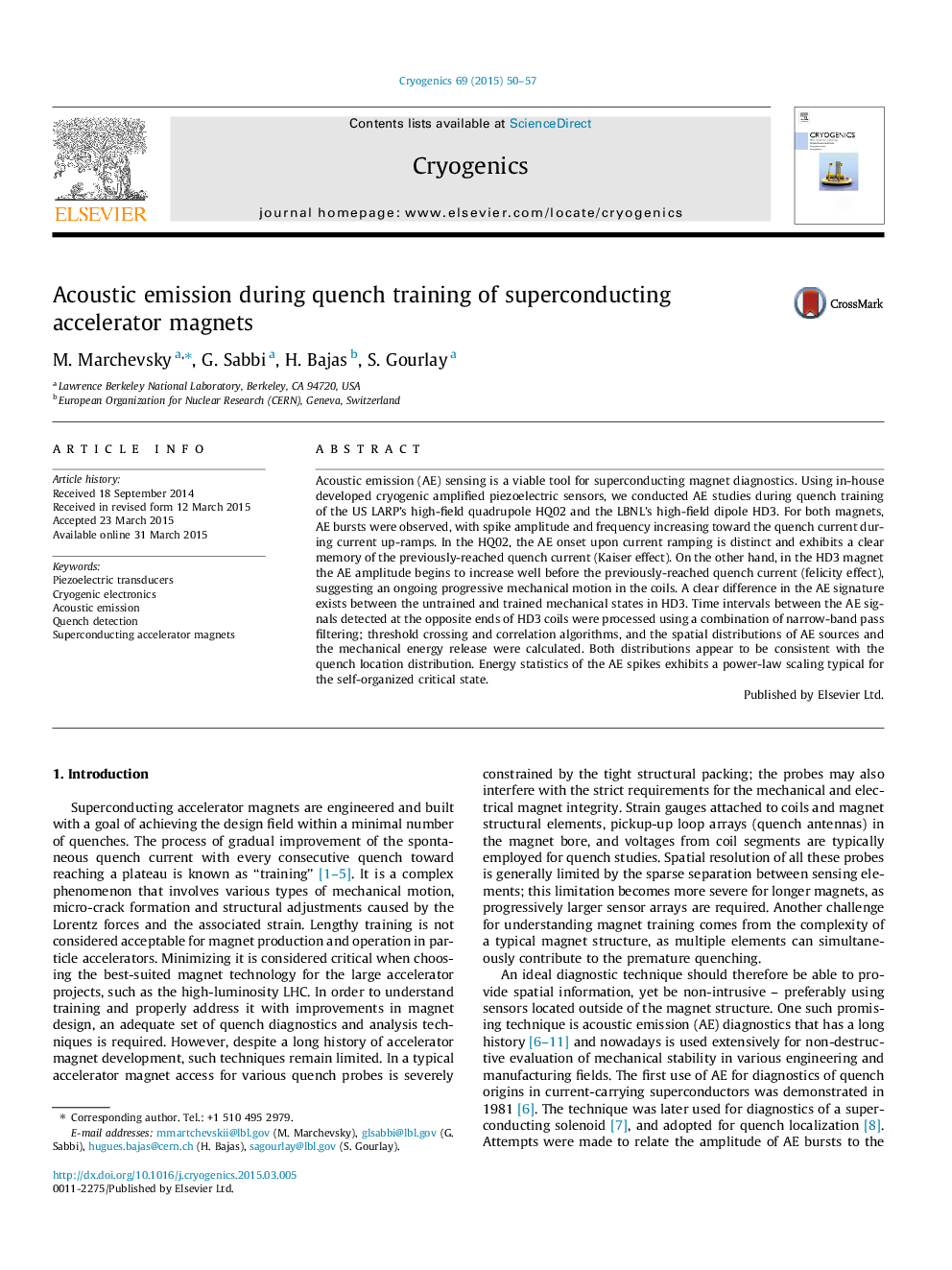| کد مقاله | کد نشریه | سال انتشار | مقاله انگلیسی | نسخه تمام متن |
|---|---|---|---|---|
| 1507313 | 1511043 | 2015 | 8 صفحه PDF | دانلود رایگان |
• Training of superconducting accelerator magnets causes acoustic emission (AE).
• AE increases in amplitude and frequency toward the quench current.
• In a magnet that trains quickly, AE exhibits memory of the highest reached current.
• Power density and locations of the AE sources correlate with the quench locations.
• Number of AE events scales as power-law with the event energy.
Acoustic emission (AE) sensing is a viable tool for superconducting magnet diagnostics. Using in-house developed cryogenic amplified piezoelectric sensors, we conducted AE studies during quench training of the US LARP’s high-field quadrupole HQ02 and the LBNL’s high-field dipole HD3. For both magnets, AE bursts were observed, with spike amplitude and frequency increasing toward the quench current during current up-ramps. In the HQ02, the AE onset upon current ramping is distinct and exhibits a clear memory of the previously-reached quench current (Kaiser effect). On the other hand, in the HD3 magnet the AE amplitude begins to increase well before the previously-reached quench current (felicity effect), suggesting an ongoing progressive mechanical motion in the coils. A clear difference in the AE signature exists between the untrained and trained mechanical states in HD3. Time intervals between the AE signals detected at the opposite ends of HD3 coils were processed using a combination of narrow-band pass filtering; threshold crossing and correlation algorithms, and the spatial distributions of AE sources and the mechanical energy release were calculated. Both distributions appear to be consistent with the quench location distribution. Energy statistics of the AE spikes exhibits a power-law scaling typical for the self-organized critical state.
Journal: Cryogenics - Volume 69, July 2015, Pages 50–57
